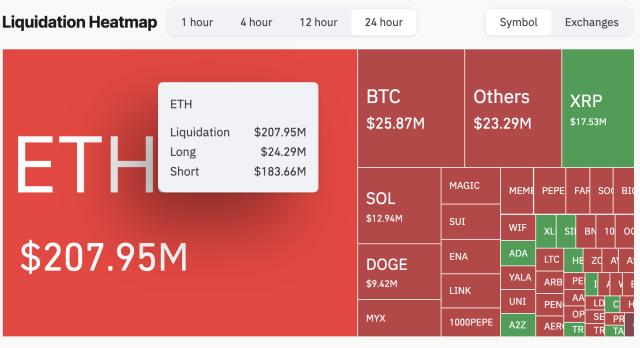Written by: Zhang Feng
Real-world assets (RWA) are accelerating into the DeFi domain, bringing a liquidity revolution to traditional finance. However, currently in practice, DeFi's anonymity conflicts with traditional finance's strict regulation (especially KYC/AML). Achieving compliance is not a simple transplant, but requires innovative architecture and technological integration.
The fusion of RWA and DeFi is not a simple "access", but generates a new type of financial infrastructure. A successful KYC/AML compliance solution must be a hybrid architecture: off-chain identity authentication and legal entities as the cornerstone, with on-chain implementation of efficient, privacy-friendly verification and execution through ZKP, DID, and programmable compliance. Regulators need to embrace innovation and establish adaptive rules under the principle of "same risk, same regulation". Technical developers need to view compliance as a core design goal, not a post-hoc patch.

Layout from blockchain identity and contract access perspectives.
Off-Chain/On-Chain Hybrid Identity Verification. Users complete strict KYC/AML verification through off-chain professional KYC providers like Circle (USDC issuer), Fractal ID, Parallel Markets. Biometric identification, document verification, and risk database screening are completed in a secure off-chain environment. Simultaneously, based on on-chain verifiable credentials, generate zero-knowledge proof (ZKP) credentials (such as Polygon ID) or soul-bound tokens (SBT), proving the user has "passed KYC" or is "not on the sanctions list" without exposing specific identity information. Credentials are bound to the user's wallet address.
Compliance Access Layer (Gated Access / Permissioned Pools). DeFi protocols (like Centrifuge, Goldfinch) set specific RWA fund pools with certificate-based access control rules. Users must provide valid credentials to participate (depositing, lending, trading specific RWA assets). When KYC status expires or is revoked, credentials automatically become invalid, triggering preset dynamic credential management rules within the protocol (such as prohibiting new investments, initiating exit processes).
II. Real-Time Transaction Monitoring and Automated AML Screening Challenges
In dynamic monitoring, multiple measures are taken through off-chain data integration, on-chain transaction behavior monitoring, and suspicious activity reporting.
On-Chain Transaction Monitoring. Tools like Chainalysis and Elliptic can analyze wallet transaction history and associated addresses (such as interactions with the Dark Web, mixers), generating address risk scores. Additionally, construct anomaly pattern detection to monitor large-amount, frequent, or abnormal source/destination transactions (like suddenly transferring a large amount of funds and immediately investing in RWA).
Off-Chain AML Database Integration. Integrate real-time screening APIs from providers like ComplyAdvantage and LexisNexis. The key challenge is associating wallet addresses with off-chain identities (dependent on the aforementioned credential system) to make screening legally valid. However, how can on-chain smart contracts securely and reliably obtain updates to off-chain AML lists? Specific solutions from decentralized oracle networks (like Chainlink) need to be developed.
Suspicious Activity Report (SAR) Linkage between On-Chain and Off-Chain. When protocols or monitoring services detect high-risk transactions, they need to report encrypted transaction data + associated identity information to regulatory authorities/compliance teams through compliance interfaces. The key challenge is standardizing the reporting process, responsible parties, and data format.
III. Clarifying Responsible Entities and Basic Dispute Resolution Mechanisms
Primarily addressing liability and dispute resolution mechanisms.
Clarifying Compliance Obligation Bearers (The Gatekeeper Problem). For special purpose vehicles (SPV)/legal entities, RWA initiators (such as real estate companies, bond issuers) or protocol core developers establish regulated entities (like Centrifuge's US-registered entity) as legal responsible parties fulfilling KYC/AML. For permissioned DeFi protocols, the protocol itself needs to be designed with permission requirements (nodes, liquidity providers all require KYC), similar to some enterprise blockchain solutions (like Fnality). Additionally, third-party compliance service providers can be utilized, such as protocols entrusting licensed institutions (like trust companies, payment institutions) to handle user due diligence and transaction monitoring.
Jurisdiction and Legal Applicability. Real estate RWA is primarily governed by the law of its physical location. Some scenarios apply the user's location law, requiring compliance with financial regulations of the user's residence/nationality (such as US FATCA, EU AMLD). Simultaneously, require protocol transparency in design to clearly announce applicable laws, regulatory authorities, and user rights.
IV. Balancing Privacy and Efficiency through Technical and Legal Solutions
Integrating privacy computing technologies, decentralized identity technologies, and recognized regulatory technologies with smart contracts.
Deep Application of Zero-Knowledge Proofs (ZKP). KYC credentials can prove user information is valid and not blacklisted without revealing specific content. They can also perform AML screening, with users running screening software locally to generate ZKP proof that "my transaction counterparty is not on the latest blacklist" without exposing the counterparty's address. Additionally, transaction compliance proofs can be generated, with complex transactions producing ZKP proof of compliance with all preset rules (such as single investor limits).
Decentralized Identity (DID) and Verifiable Credentials (VCs). Users completely control identity data (stored in personal digital wallets), selectively disclosing specific information to specific parties only when needed (such as proving to an RWA pool that "annual income > $100,000"). This improves interoperability and reduces duplicate KYC.
Combining RegTech with Smart Contracts. Programmable compliance, such as directly encoding AML rules, investment limits, and lock-up periods into smart contracts for automatic execution. Provide "read-only" regulatory sandbox API interfaces for regulatory authorities to monitor overall risks without viewing each transaction's privacy details.
V. Advancing through Continuous Challenges and Solutions
The eternal tension between privacy and compliance - how to maximize user financial privacy while meeting regulatory real-name requirements. ZKP/DID is the direction, but large-scale application requires more mature practices.
Cross-jurisdictional coordination is also a major challenge. There is a global lack of unified crypto asset/DeFi regulatory frameworks, with RWA protocols facing fragmented compliance requirements.
Blurred responsibility definition. How are liabilities divided among developers, nodes, users, and SPVs when smart contract vulnerabilities lead to violations? Laws urgently need to catch up. This can be pre-agreed during model design.
Oracle trust and security. Off-chain critical data (AML lists, asset prices) uploaded to the chain must be highly secure and reliable, otherwise becoming single points of failure or attack targets.
Sanctions enforcement difficulties. How to effectively freeze assets of specific sanctioned addresses on permissionless base layer blockchains? Technically extremely difficult, requiring control through front-end/deposit-withdrawal channels, combining on-chain and off-chain approaches.
Despite enormous challenges, the compliance path of RWA in DeFi is being explored through projects like Centrifuge, MakerDAO (RWA collateral), and Ondo Finance (tokenized government bonds). This is not just about legality, but the key to unlocking trillions of dollars in liquidity - compliance is the necessary path for DeFi to go mainstream, not an obstacle.








